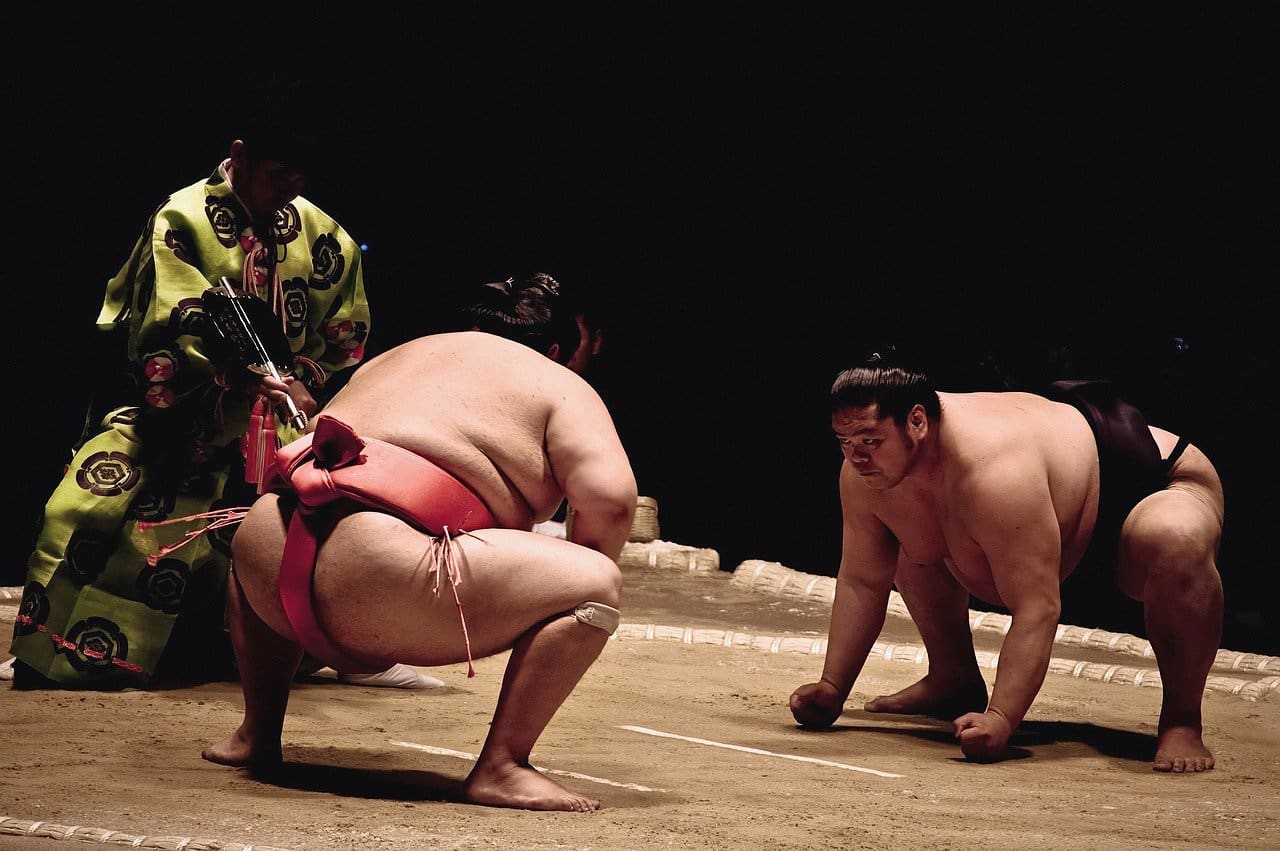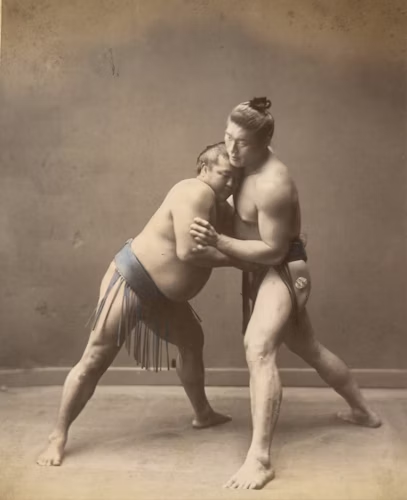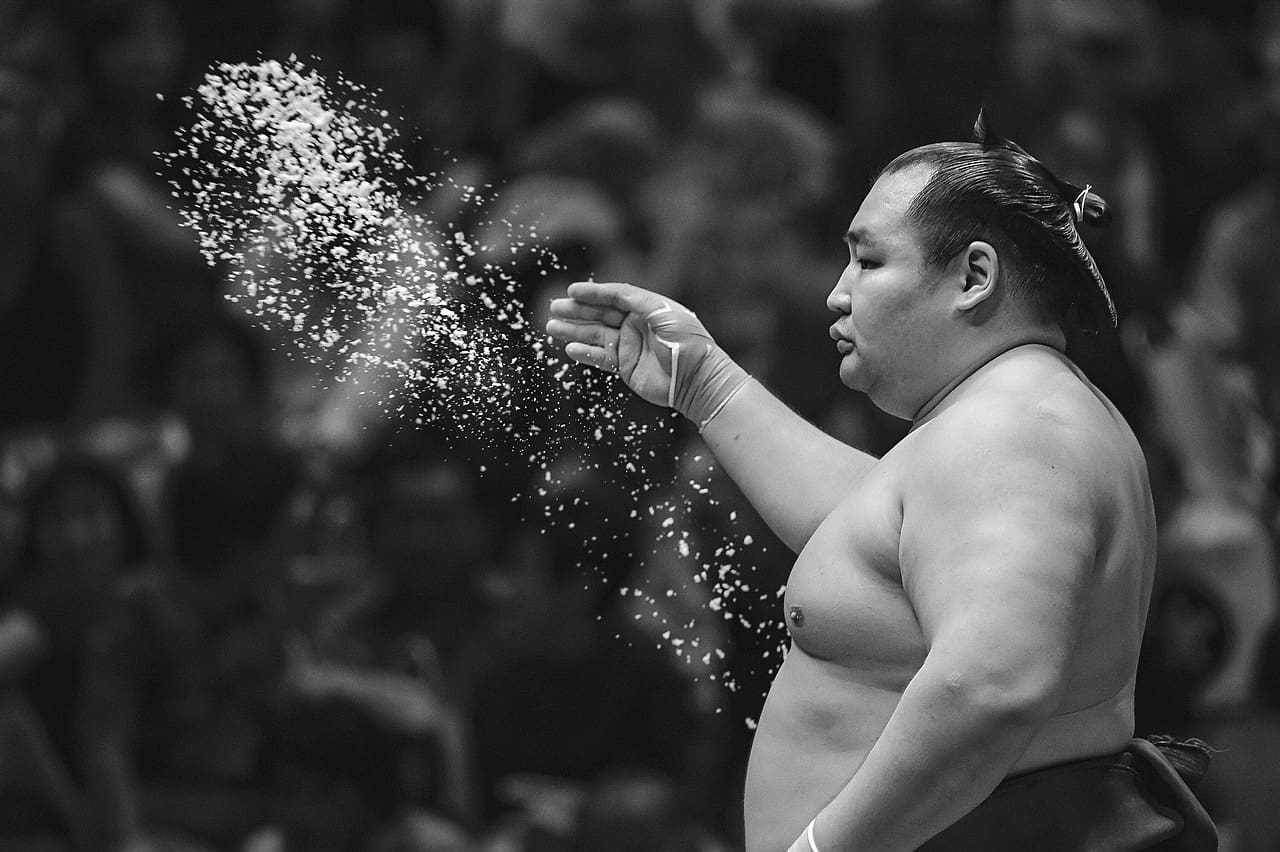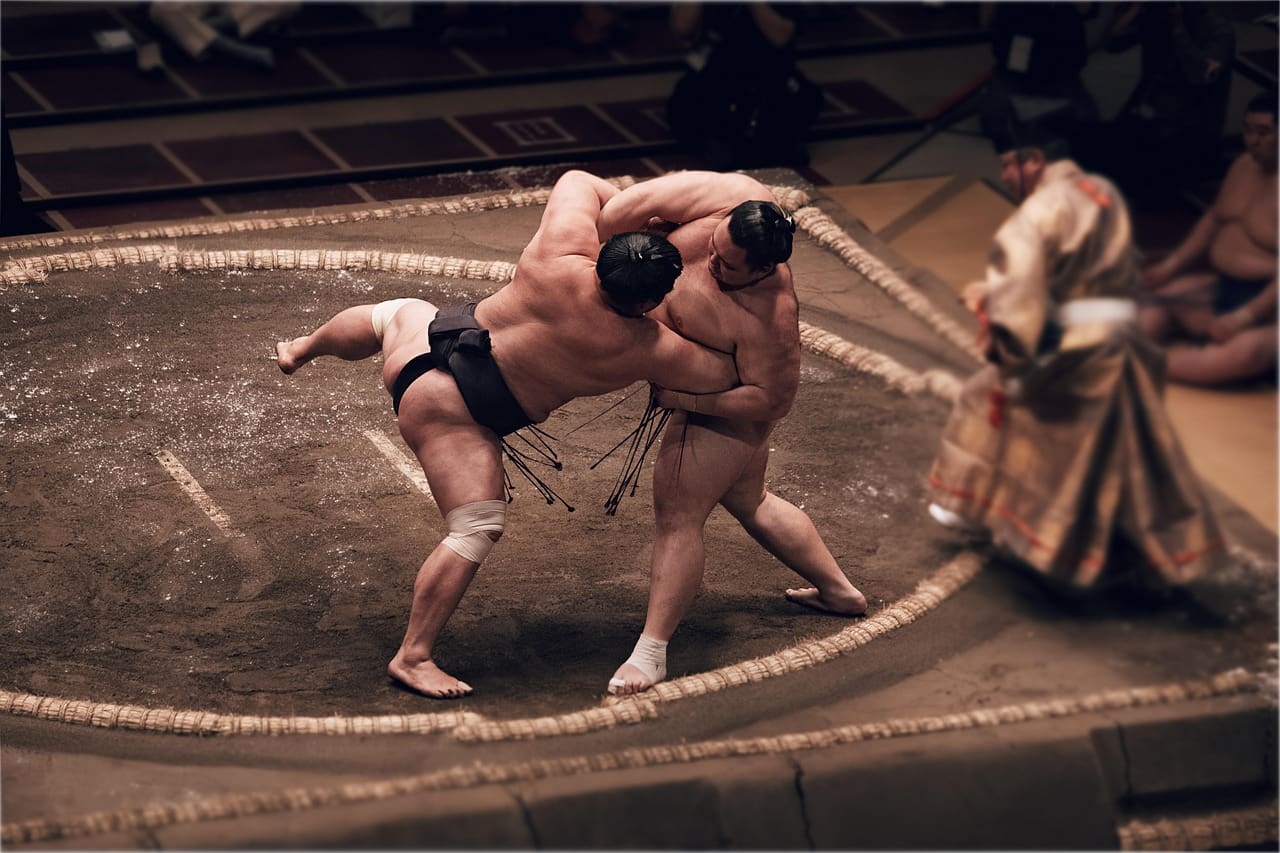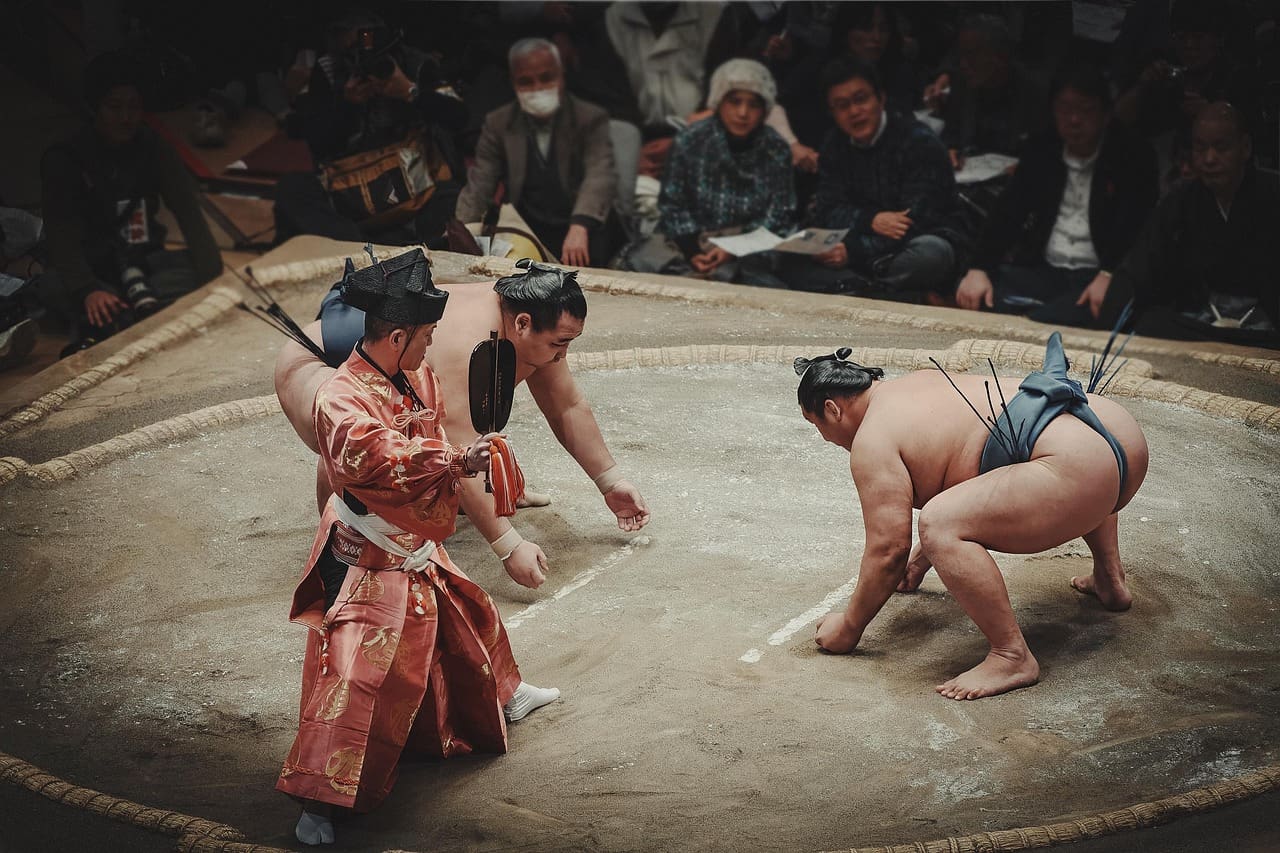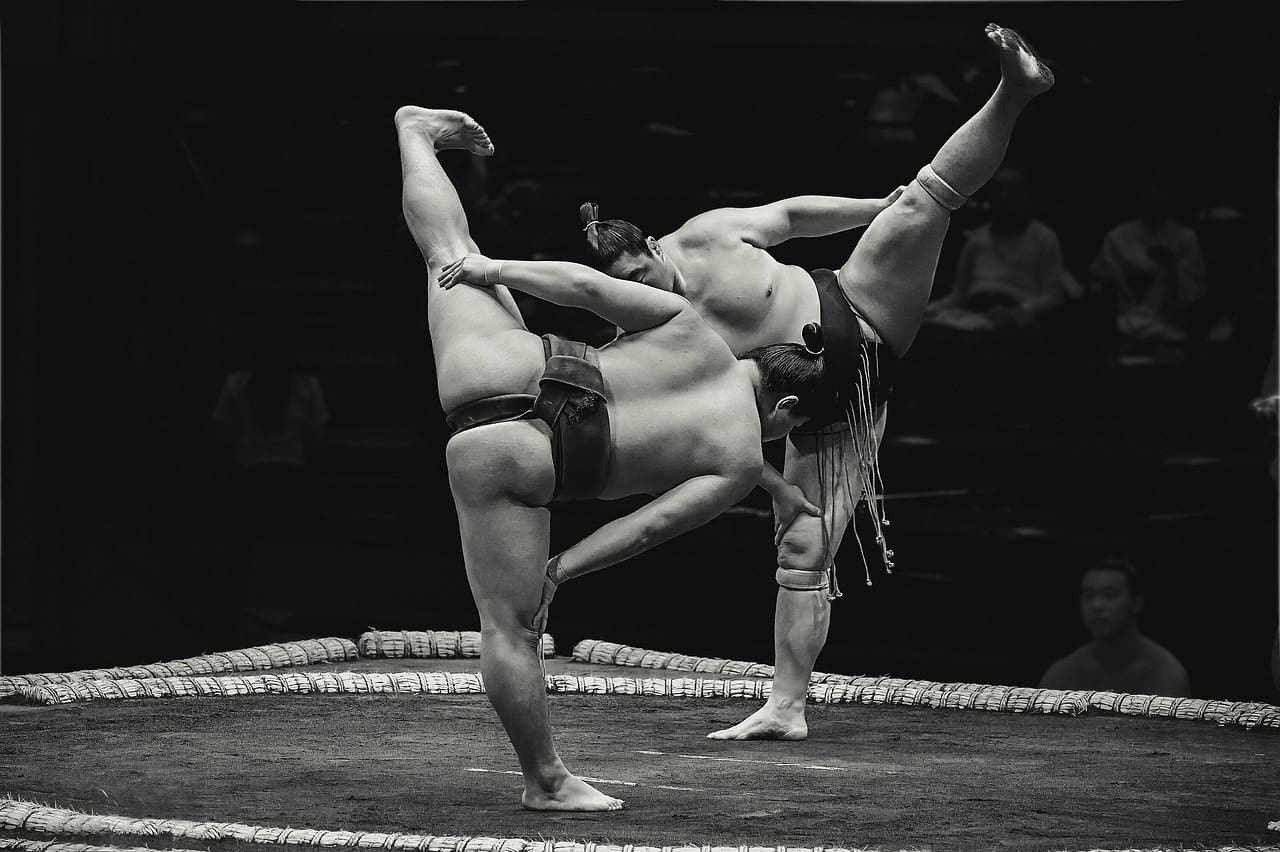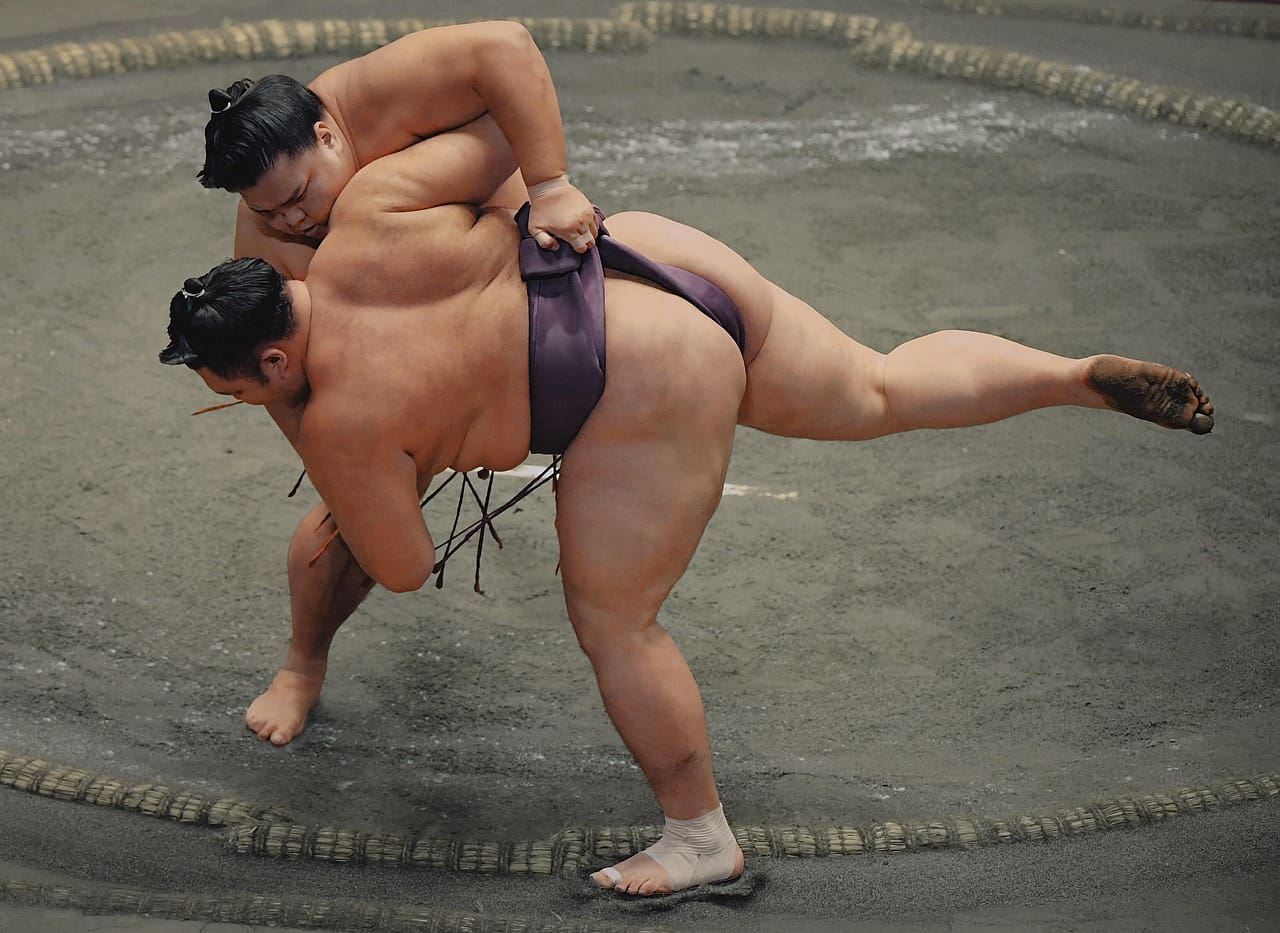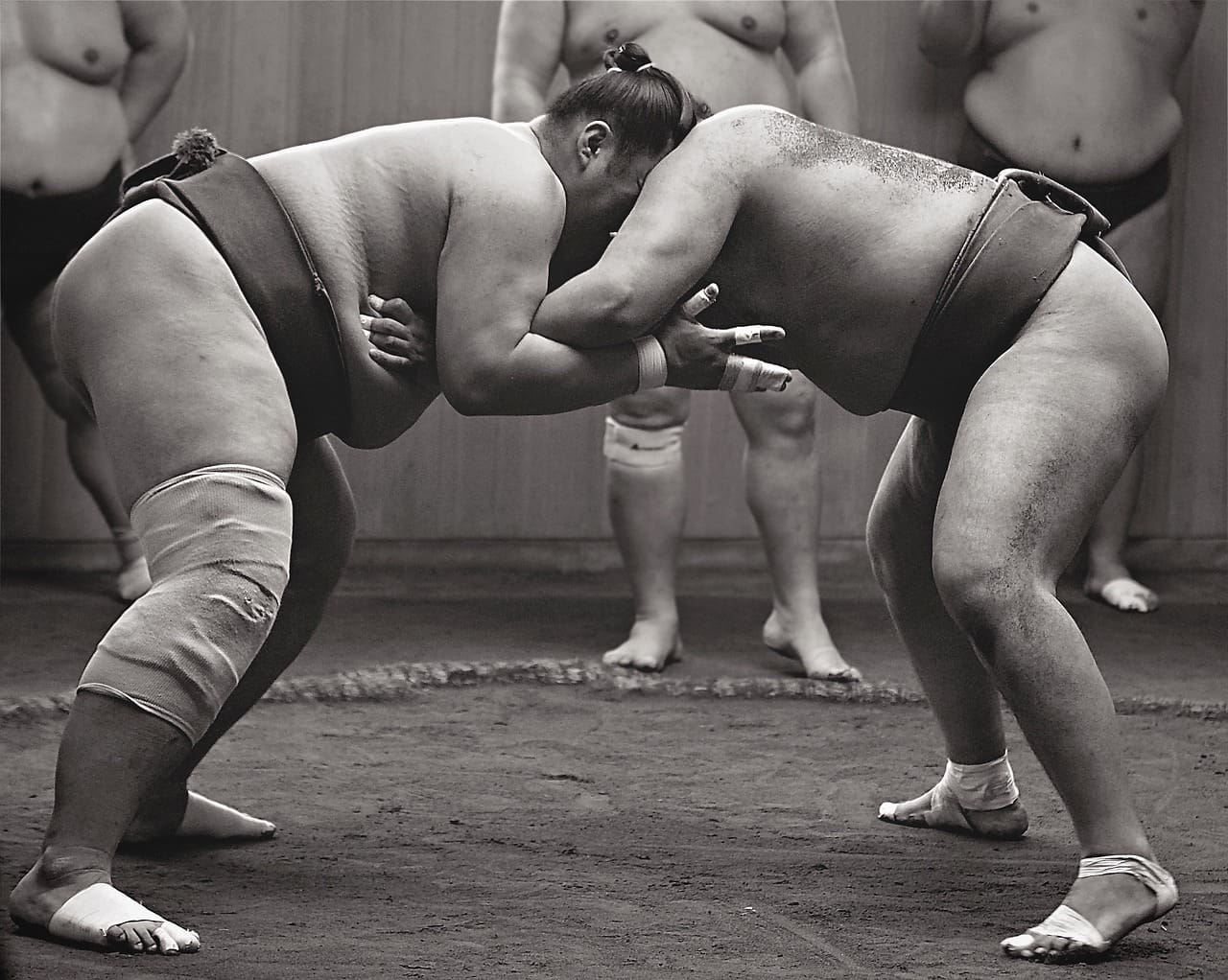Sumo History
Sumo has a history that dates back over 1,500 years, with its origins rooted in ancient Shinto rituals performed at shrines to ensure good harvests and seek divine favour. Early sumo matches were part of religious ceremonies and festivals, and were not initially organised as formal competitions. Over time, sumo wrestling became a professional sport, particularly during the Edo period (1603-1868), when it was formalised into the sport we recognise today. The first recorded sumo tournament took place in 1669. It was during this time that sumo wrestlers began to form ranks, and the sport became more structured, with the establishment of rankings, official tournaments, and specific rules.
In the modern era, sumo remains an essential part of Japanese culture, with tournaments held regularly throughout the year, and the sport is still steeped in traditional ceremonies and rituals. Sumo wrestlers, or rikishi, undergo rigorous training, and the sport is often seen as a lifelong commitment. Today, sumo has international recognition, with wrestlers from outside Japan, including the United States, Russia, and Mongolia, rising to top ranks.
